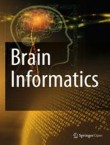Citation Impact 2023
Source Normalized Impact per Paper (SNIP): 1.543
SCImago Journal Rank (SJR): 1.016
Speed 2023
Submission to first editorial decision (median days): 13
Submission to acceptance (median days): 128
Usage 2023
Downloads: 302,950
Altmetric mentions: 141
Enhanced brain parcellation via abnormality inpainting for neuroimage-based consciousness evaluation of hydrocephalus patients by lumbar drainage
Brain network analysis based on structural and functional magnetic resonance imaging (MRI) is considered as an effective method for consciousness evaluation of hydrocephalus patients, which can also be applied...
